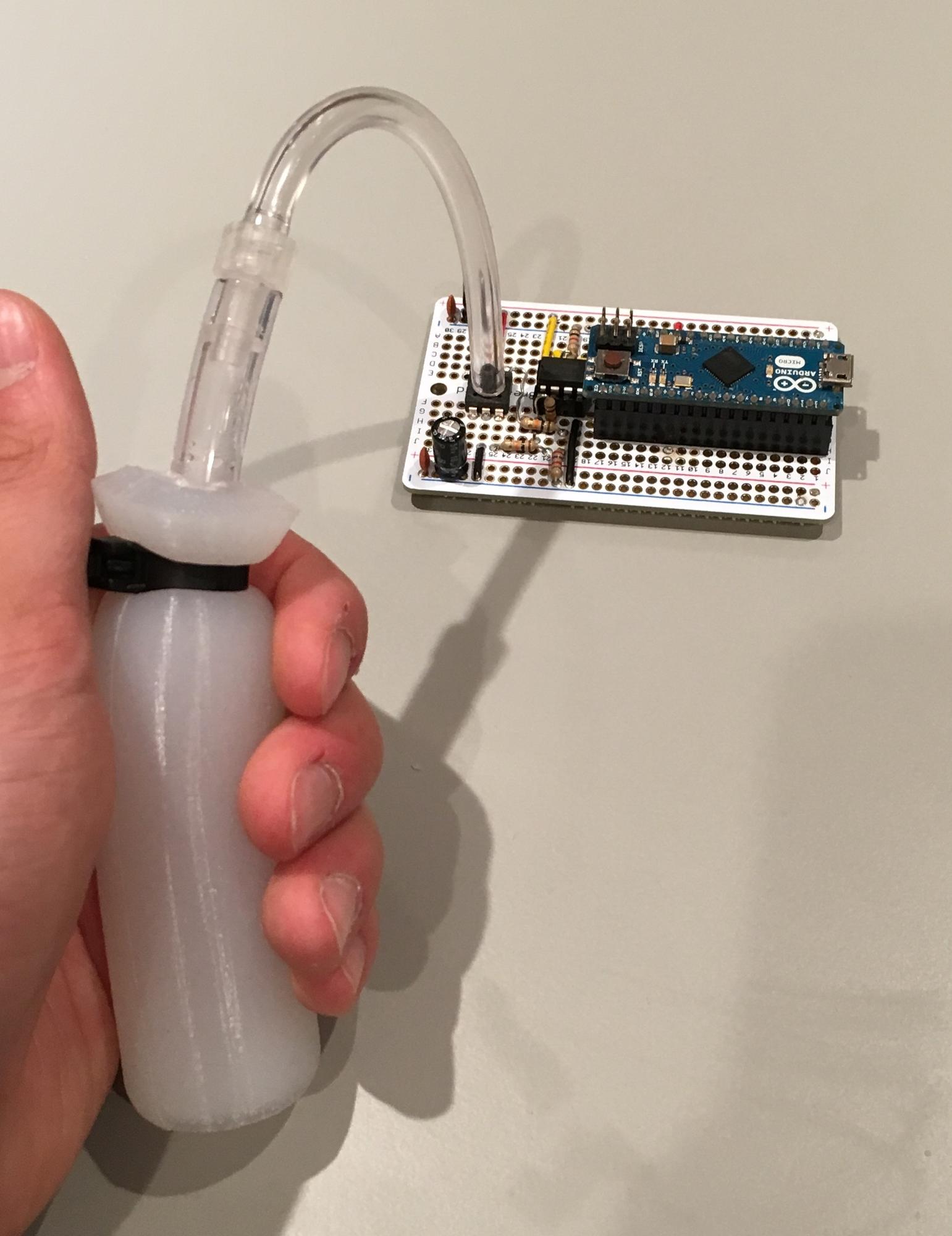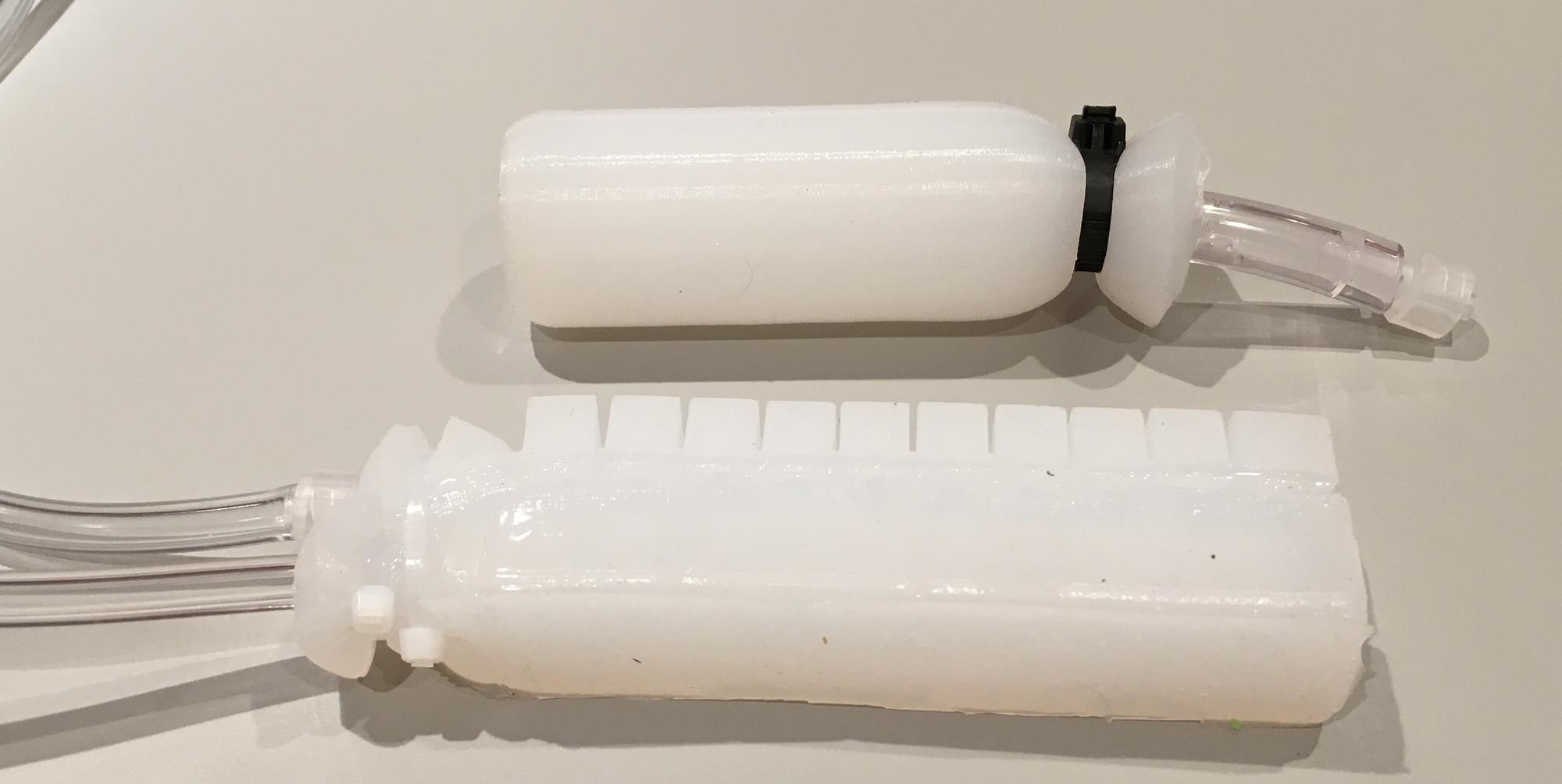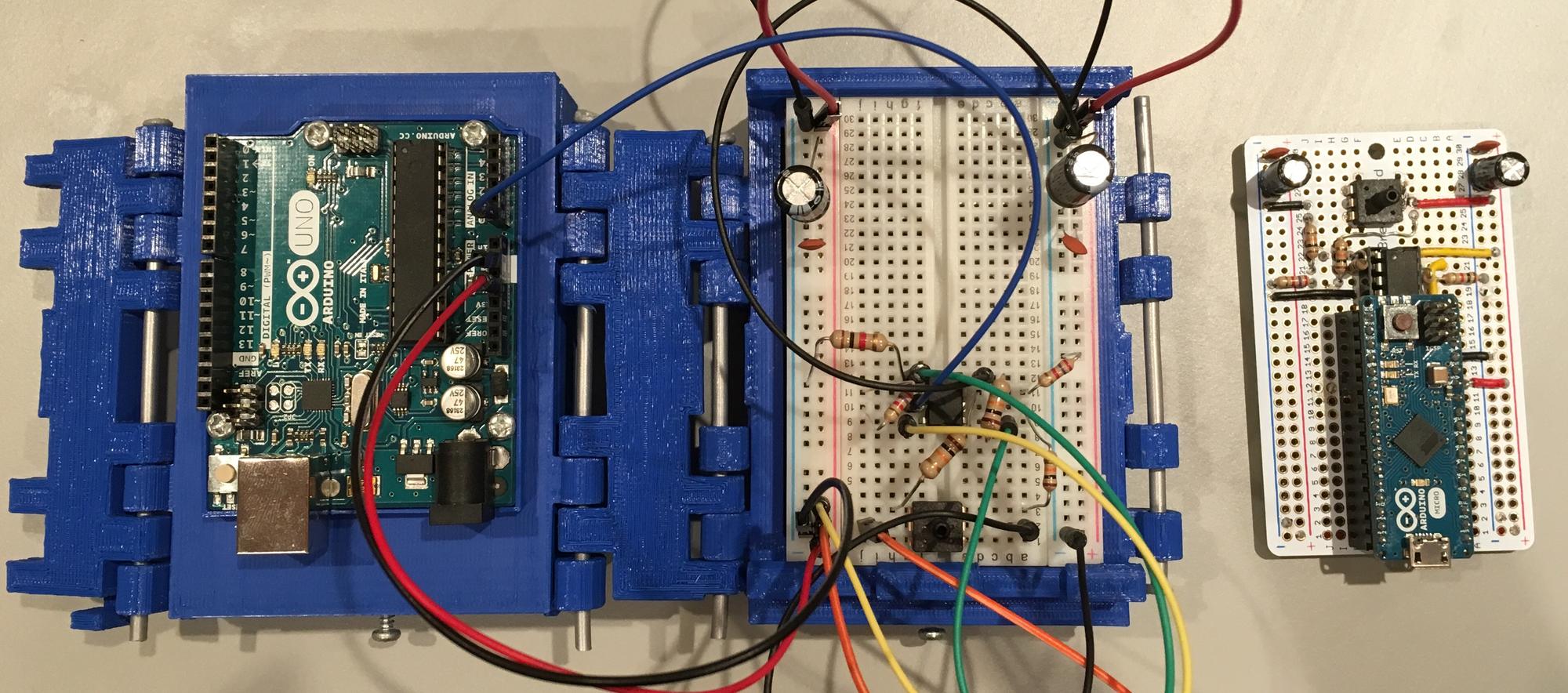Simply put, a Pneumatic Deformation Sensor is a soft air bladder connected to an electrical pressure sensor. When the bladder deforms, whether it is being compressed, twisted or stretched, the air inside changes in pressure. This change in pressure can then be read by a pressure sensor and a microcontroller.

There are two designs available in this guide for PDS's. The first one is meant to demonstrate the concept and is meant to be squeezed and pulled. The second design is meant to show an application of PDS's and is a sensor attached to an existing soft robotic actuator.

Although any soft, airtight structure can be used as a PDS, certain geometries and specifications will function better than others. This is covered in-depth in the Sensor Design Guide.
The air bladder itself can be made from a variety of soft materials. Both of the designs shown use low-durometer silicones casted in 3D printed molds, however, there is nothing to prevent other soft and airtight materials from being used, such as airtight fabric or plastic.
The circuitry shown in this guide is based on the MPS20N0040D-D Pneumatic pressure sensor and needs an Op-Amp to amplify the signal and an Arduino microcontroller to read it. There are two circuits shown, one for a breadboard and one for a perfboard with soldered components.

